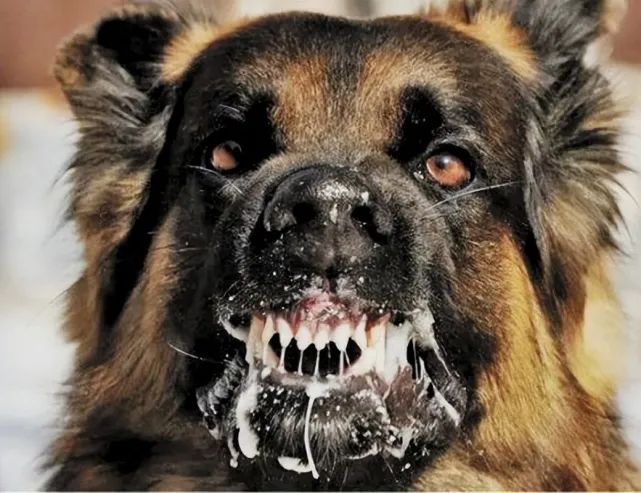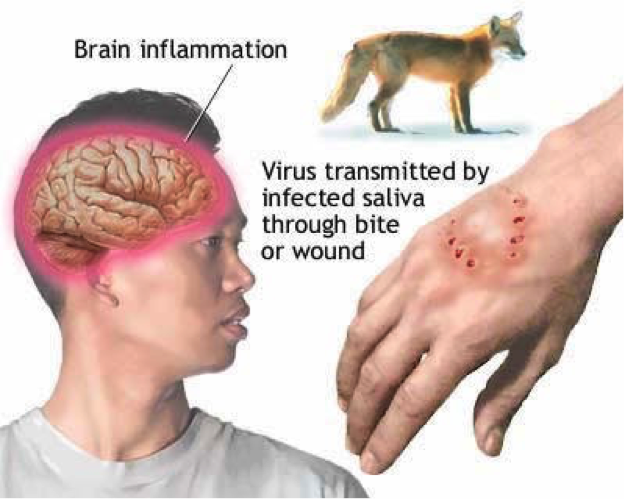Rabies is a fatal viral disease caused by the rabies virus. The disease is not only harmful to human health, but also seriously threatens the lives of many animals. The rabies virus is mainly transmitted through the saliva of infected animals. Once infected, it causes acute encephalitis, which is almost always fatal. Therefore, it is important to understand how animals are infected with rabies, how rabies is transmitted, and effective prevention measures.
This article will explore in depth how rabies is transmitted in animals, analyze the types of susceptible animals, and provide relevant prevention recommendations.
infect.png

1. Basic Overview of Rabies
Rabies is an acute infectious disease caused by the rabies virus, which mainly affects the central nervous system. Once symptoms appear, it is almost 100% fatal. The rabies virus belongs to the Rhabdoviridae family, which can infect a variety of mammals, including dogs, cats, bats, raccoons, foxes, etc.
Rabies is mainly transmitted through bites, scratches, or broken skin contact with the saliva of infected animals. The virus is present in extremely high levels in the saliva of infected animals. Once it enters the host, it will quickly spread to the nervous system, causing severe neurological symptoms.
2. Transmission routes of rabies
The transmission of rabies mainly depends on direct contact with the saliva of infected animals. Usually, animals are infected with rabies in the following ways:
1. Bites
Bites from infected animals are the most common route of transmission of rabies. Infected mammals, such as dogs, cats, bats or wild animals, have large amounts of rabies virus in their saliva. When these animals bite healthy animals, the virus enters the body through broken skin.
1.1 Dogs and cats
Domestic pets, such as dogs and cats, are the main vectors of rabies transmission. Although the widespread vaccination of pets against rabies has reduced the risk of transmission in many countries, unvaccinated dogs and cats are still the main source of rabies transmission in some areas with low vaccine coverage.
1.2 Wild animals
Wild animals, such as foxes, raccoons, coyotes, wolves, etc., are also important transmitters of rabies. These animals live in the wild and are easily infected with the virus through contact with other infected wild animals. Bites from these wild animals are an important way for animals and humans to be infected with rabies.
2. Scratches
In addition to bites, scratches from infected animals are also one of the ways rabies is transmitted. When the paws of infected animals carry saliva or blood, scratches can cause the virus to enter the host through broken skin.
3. Contact with saliva from infected animals
Although bites and scratches are the most common ways of transmitting rabies, in some cases, contact with the saliva of infected animals can also cause rabies infection. For example, when the mucous membranes of healthy animals (such as eyes, nose, mouth) come into contact with the saliva of rabid animals, the virus can also enter the body through the mucous membranes.
4. Food chain transmission
In rare cases, rabies can also be transmitted through the food chain. If an animal preys on infected wild animals and the food carries a large amount of rabies virus, the predator may also be infected with rabies. However, this transmission route is relatively rare.
5. Aerosol transmission
Aerosol transmission is very rare under natural conditions, but in some special environments, such as caves where bats live, rabies virus may be transmitted through tiny particles in the air. This mode of transmission is mainly related to bats, especially when there are a large number of bats in caves or confined spaces.
729.jpg
Three, which animals are susceptible to rabies?
Rabies affects a wide range of mammals and can infect many different species. The following are the types of animals most susceptible to rabies:
1. Domestic pets
Dogs: Dogs are the most common source of rabies worldwide, especially in areas with low vaccination rates. Dogs live closely with humans, and once unvaccinated dogs are infected with rabies, they will spread the virus to humans or other animals through bites or licking.
Cats: Cats are also common hosts for rabies transmission, especially those unvaccinated stray cats or cats that frequently move outdoors.
2. Wild animals
Bats: Bats are the main transmitters of rabies in North America and Europe, especially certain species of vampire bats. These bats can transmit rabies through bites and, in some extreme cases, through aerosols.
Foxes: Foxes are important transmitters of rabies in many areas. They are a bridge for rabies transmission between animals in the wild and between wild animals and domestic animals.
Raccoons, skunks, and coyotes: These animals are also common sources of rabies in some countries, especially in areas where wildlife and human activities overlap.
3. Livestock
Although relatively rare, livestock such as cattle, horses, and sheep can also be infected with rabies, usually through contact with infected wild animals (such as bites). Once these animals are infected with rabies, the disease spreads rapidly and is almost always fatal.
4. Symptoms of rabies infection in animals
The incubation period of rabies varies in different animals, usually ranging from several days to several months. After infection with the rabies virus, the virus replicates in local wounds and then gradually invades the central nervous system, eventually leading to severe neurological symptoms. Here are some common rabies symptoms:
1. Initial symptoms
In the early stages of rabies infection, animals may show mild behavioral abnormalities, such as fatigue, loss of appetite, and restlessness. At this stage, the symptoms are not obvious and are often ignored.
2. Excitement phase
As the disease progresses, infected animals may enter a manic state of excitement, manifested by increased aggression, biting people and objects, and excessive salivation (the so-called "drooling" symptom). At this stage, the animal's behavior is extremely abnormal and may pose a great threat to other animals or humans around them.
3. Paralysis phase
Eventually, rabies patients may enter a paralysis phase, manifested by weakness in the limbs, difficulty breathing, and difficulty swallowing. Neurological damage caused by rabies can rapidly worsen and eventually lead to death.
V. How to prevent animals from contracting rabies?

Rabies is a preventable disease. The spread of rabies can be effectively prevented by taking the following measures:
1. Rabies vaccination
The most effective way to prevent rabies is to get a rabies vaccine. In many countries, domestic pets such as dogs and cats must be vaccinated against rabies regularly to ensure that they have adequate immunity to the virus.
Pet vaccination: Pet owners should ensure that dogs and cats are regularly vaccinated against rabies, especially in areas where rabies is prevalent.
Wildlife management: In some countries, wild animals (such as foxes and raccoons) are also vaccinated against rabies through oral vaccination.
2. Avoid contact with wild animals
To reduce the risk of infection, avoid contact with wild animals, especially those that may carry rabies, such as bats, foxes and raccoons. If you find wild animals with abnormal behavior, you should contact the local animal management department immediately and do not try to touch or capture these animals.
3. Pet management
Try not to let pets go freely in the wild to prevent them from coming into contact with wild animals infected with rabies. In addition, pets should be properly managed to avoid them from coming into contact with other unvaccinated animals.
4. Treat wounds in a timely manner
If you are bitten or scratched by an animal suspected of being infected with rabies, you should immediately wash the wound thoroughly with soap and water and seek medical attention as soon as possible. The doctor will decide whether rabies vaccination is needed based on the wound condition.
VI. Summary
Rabies is a disease that seriously threatens the life and health of animals and humans, especially through bites, scratches, etc. It is transmitted between animals. Animals can be effectively prevented from being infected with rabies by vaccination, avoiding contact with wild animals, and strengthening pet management.
The prevention and control of rabies requires global collaboration, especially in areas with low vaccine coverage. Scientists, public health agencies, and pet owners should work together to reduce the spread and incidence of rabies.
animal tags:
We created this article in conjunction with AI technology, then made sure it was fact-checked and edited by a Animals Top editor.